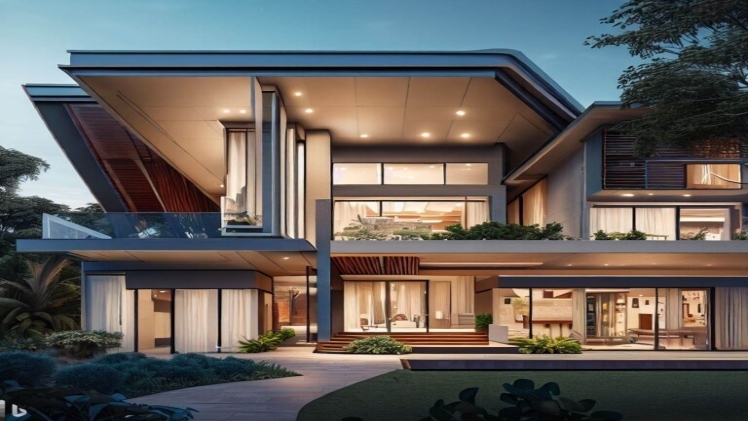Introduction:
Home improvement, a timeless pursuit, is a creative and practical endeavor that goes beyond mere renovations. It is an expression of personal style, a reflection of evolving needs, and a commitment to creating spaces that inspire and nurture. This article embarks on a journey into the world of home improvement, delving into the diverse facets of renovation, decoration, sustainable practices, and the transformative impact it has on the quality of life.
The Essence of Home Improvement: Beyond Aesthetics
Home improvement is not solely about enhancing the visual appeal of a space; it encompasses a range of considerations that contribute to the functionality, comfort, and overall livability of a home.
-
- Functionality and Efficiency: Improving the functionality of a home involves optimizing spaces to suit the needs of its inhabitants. This could include reconfiguring layouts, adding storage solutions, or creating multi-functional areas.
- Energy Efficiency: Integrating energy-efficient elements, such as insulated windows, energy-efficient appliances, and programmable thermostats, aligns home improvement with sustainable practices while reducing utility costs.
- Comfort and Livability: Home improvement projects aim to enhance the overall comfort and livability of a space. This may involve upgrading insulation, installing smart home systems, or introducing elements that promote relaxation and well-being.
Renovation and Remodeling: Breathing New Life into Spaces
Renovation and remodeling are integral aspects of home improvement, offering opportunities to revitalize and modernize existing structures.
-
- Kitchen Renovations: The kitchen, often considered the heart of the home, is a common focus for improvement. Renovations may include upgrading appliances, modernizing cabinets, and creating functional and aesthetically pleasing cooking spaces.
- Bathroom Transformations: Bathrooms are spaces of both function and relaxation. Remodeling projects can involve updating fixtures, reconfiguring layouts, and incorporating spa-like elements for a rejuvenating experience.
- Open Concept Living: Many modern home improvement projects embrace open-concept living. Removing walls to create seamless transitions between living spaces can enhance the flow of natural light and promote a sense of spaciousness.
Decor and Aesthetics: Crafting Personalized Spaces
Aesthetic considerations are paramount in home improvement, allowing homeowners to infuse their personal style into every corner of their living spaces.
-
- Color Palettes and Themes: Choosing color palettes and themes sets the tone for a home. Whether opting for serene neutrals, vibrant hues, or thematic decor inspired by travel or personal interests, color choices contribute to the overall ambiance.
- Furniture and Accessories: Thoughtfully selecting furniture and accessories adds character to a space. From statement pieces to functional elements, the arrangement of furnishings can enhance both style and comfort.
- Art and Personalization: Integrating art and personal items into the decor transforms a house into a home. Family photos, artwork, and meaningful objects contribute to the narrative of the space.
DIY Projects: Adding a Personal Touch
DIY (Do It Yourself) projects are a popular avenue for homeowners to actively participate in the home improvement process, adding a personal touch and often reducing costs.
-
- Upcycling and Repurposing: Transforming old or unused items into new and functional pieces not only adds character to a home but also promotes sustainable practices. Upcycling projects can include furniture, decor, and even architectural elements.
- Gardening and Landscaping: Improving the exterior of a home is as crucial as enhancing its interior. DIY gardening and landscaping projects allow homeowners to create outdoor spaces that complement the overall aesthetic of the property.
- Small Home Repairs: Tackling small repairs and maintenance tasks on a DIY basis not only saves money but also empowers homeowners with a sense of accomplishment. From fixing leaks to replacing hardware, small repairs contribute to the overall well-being of a home.
Sustainable Home Improvement: Nurturing the Environment
In an era of increasing environmental awareness, sustainable home improvement practices have gained prominence, offering ways to minimize the ecological footprint of residential spaces.
-
- Energy-Efficient Appliances: Upgrading to energy-efficient appliances reduces energy consumption and lowers utility bills. This can include energy-efficient HVAC systems, LED lighting, and smart thermostats.
- Green Building Materials: Choosing sustainable and eco-friendly building materials, such as bamboo flooring, reclaimed wood, or recycled glass, aligns home improvement with environmentally conscious practices.
- Water Conservation: Implementing water-saving measures, such as low-flow faucets, dual-flush toilets, and xeriscaping in landscaping, contributes to water conservation efforts.
Smart Home Technology: Embracing the Future
The integration of smart home technology has revolutionized home improvement, offering convenience, efficiency, and enhanced security.
-
- Smart Lighting and Thermostats: Automated lighting systems and smart thermostats enable homeowners to control and optimize energy usage. These systems can be programmed or controlled remotely via smartphone apps.
- Home Security Systems: Advanced security systems, including smart cameras, doorbell cameras, and smart locks, provide homeowners with enhanced control and monitoring capabilities for added safety.
- Home Automation: From voice-activated assistants to automated blinds and smart home hubs, automation technologies streamline daily tasks and contribute to the overall efficiency of a home.
Home Improvement on a Budget: Practical Tips for Every Homeowner
Home improvement doesn’t always require a hefty budget. Practical and budget-friendly approaches can yield significant enhancements.
-
- Prioritization: Identify key areas that require improvement and prioritize projects based on urgency and impact. This approach allows homeowners to allocate resources effectively.
- DIY and Upcycling: Leveraging DIY skills and upcycling materials can significantly reduce costs. From repainting furniture to creating homemade decor, there are numerous ways to achieve a refreshed look without breaking the bank.
- Strategic Planning: Plan projects strategically to avoid unnecessary expenses. For example, combining plumbing and electrical work during a kitchen renovation can be more cost-effective than addressing each separately.
The Impact of Home Improvement on Well-Being: Creating Sanctuary Spaces
Beyond aesthetics and functionality, home improvement has a profound impact on the well-being of individuals and families, creating spaces that nurture and rejuvenate.
-
- Comfort and Relaxation: Well-designed and organized spaces contribute to a sense of calm and relaxation. Thoughtful decor and layout choices can enhance comfort and promote well-being.
- Personal Retreats: Creating designated spaces for personal retreats, such as reading nooks, meditation corners, or hobby areas, provides opportunities for relaxation and self-care within the home.
- Adaptability to Life Changes: Home improvement projects that consider potential life changes, such as the addition of family members or changes in mobility, contribute to the long-term adaptability and functionality of a home.
Conclusion:
Home improvement is a dynamic and creative endeavor that transforms houses into personalized sanctuaries. From aesthetic enhancements to functional upgrades, sustainable practices to DIY projects, the realm of home improvement offers endless possibilities for creating spaces that reflect individuality and support well-being. As homeowners embark on the journey of improving their homes, they contribute not only to the physical structure but also to the creation of environments that inspire, nurture, and evolve with the changing needs of those who inhabit them.





